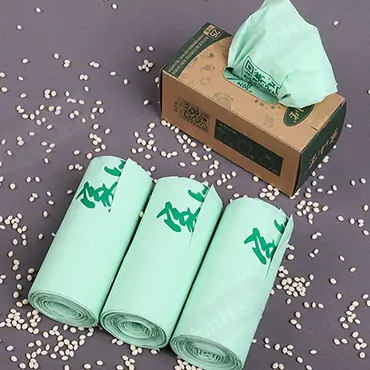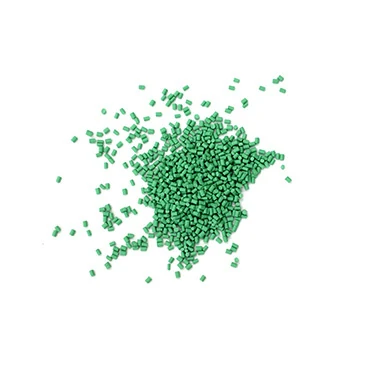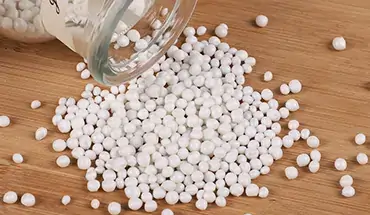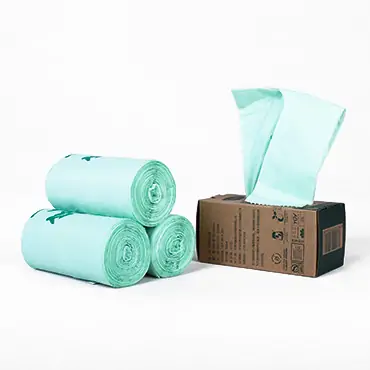On one side, we face the increasingly severe issue of plastic pollution, while on the other, the fast-paced lifestyle compels us to rely on takeout containers. It seems we are caught in a dilemma. Don’t worry! Biodegradable take-out containers have become a new solution. Are Biodegradable food containers really greener than plastic takeaway containers? Do biodegradable food containers really degrade? How do I choose them? Choosing the right biodegradable food container is crucial not only for reducing environmental impact but also for ensuring food safety and quality. However, navigating the world of biodegradable materials can be tricky, with numerous options and potential pitfalls. This guide aims to demystify the process, helping you make informed decisions.
 The Need for Biodegradable Containers
The Need for Biodegradable Containers
Traditional plastic takeaway containers, while convenient, contribute significantly to environmental pollution. They take centuries to decompose and often end up in landfills or oceans, harming wildlife and ecosystems. Biodegradable food containers can be decomposed by natural microorganisms (e.g., bacteria, fungi) through biochemical reactions in natural environments, ultimately converting them into harmless substances such as carbon dioxide, water, and inorganic salts. This process typically relies on enzymes secreted by microorganisms, and the decomposition products are non-toxic to the environment. Biodegradable food containers offer a promising alternative, as they can break down under specific conditions, reducing long-term environmental harm.
Learn more: What is biodegradable?
Common Pitfalls and Challenges
Despite their eco-friendly appeal, selecting biodegradable food containers comes with challenges:
Material Misidentification: Don’t believe all “biodegradable” claims. Check whether this “biodegradable container” has an international or regional certification mark, such as EN 13432 in Europe, ASTM D6400 in the United States, etc. These certifications often involve laboratory tests that simulate decomposition under industrial compost conditions. Secondly, material composition is also a key point. True biodegradable materials are usually based on natural polymers such as starch, cellulose, polylactic acid (PLA), etc. If the product contains traditional plastics (such as PE, PP, PET), even if a small amount of degradable ingredients is added, it may not meet the standard.
Degradation Conditions: Biodegradability depends on environmental factors like temperature, moisture, and microbial activity. Containers labeled as biodegradable in industrial settings may not decompose in home compost bins or natural environments.
Cost Considerations: Biodegradable materials can be more expensive than conventional plastics, which might deter some businesses despite their environmental benefits. However, a biodegradable food container is a worthwhile investment both from an environmental perspective and to enhance the corporate image of the brand.
Performance Issues: Some “biodegradable containers” can’t match the durability, heat resistance, or moisture barrier properties of traditional plastics, affecting food preservation and usability.
Exploring Biodegradable Material Options for Food Containers
Several biodegradable materials are gaining traction for sustainable food packaging, each with unique attributes and limitations:
1. Polylactic Acid (PLA)
- Source: Derived from renewable feedstocks like corn starch.
- Advantages:
Commercially compostable under industrial standards (e.g., EN 13432).
Transparent, rigid, and heat-resistant up to 100°C (212°F).
Suitable for cold and warm foods, including microwavable applications (check manufacturer guidelines). - Limitations:
Deforms at temperatures exceeding 110°F (45°C).
Industrial composting required for full biodegradation; may not break down in home compost or marine environments.
2. Propylene Carbonate (PPC)
- Production: Synthesized via copolymerization of CO₂ and propylene oxide, capturing ~0.45 tons of CO₂ per ton of PPC produced to support carbon neutrality.
- Advantages:
Biodegrades into CO₂ and water under aerobic conditions.
Soft and flexible, with potential for rigid applications through blending. - Limitations:
Low glass transition temperature (~30–40°C) limits heat resistance.
Mechanical performance inferior to conventional plastics; requires optimization for durability.
Higher production costs hinder widespread adoption.
3. Kraft Paper
- Composition: Made from chemical pulp (kraft process), offering natural strength and printability.
- Advantages:
Home- and industrially compostable; microwave- and freezer-safe.
Enhance liquid resistance with biodegradable coatings (e.g., PLA or PPC-based). - Limitations:
Absorbent and prone to leakage without coatings.
Opaque, limiting food visibility.
Less durable than plastic for heavy-duty applications.
Recommendation
For balanced sustainability and functionality, opt for kraft paper with certified compostable coatings or PLA/PPC containers for chilled foods. PPC shows promising potential and requires further technological development for broad commercialization. Always verify composting conditions and certifications (e.g., TÜV Austria, BPI) to ensure genuine biodegradability.
Making the Right Choice
When choosing biodegradable food containers, consider the following:
- Intended Use: Will the container be used for hot or cold foods? Will it need to be microwaved or frozen?
- Degradation Environment: Ensure the container is suitable for the composting or disposal method available to you.
- Cost and Availability: Compare prices and check if the material is readily available in your region.
- Certifications: Look for certifications like the Biodegradable Products Institute (BPI) label, which indicates the product meets compostability standards.
How to Find Certified Biodegradable Food Containers?
For restaurants and foodservice businesses, navigating the “eco-friendly” marketing maze to source truly sustainable packaging is no easy feat. With everyone claiming “green credentials,” how do you identify a trustworthy supplier?
When it comes to eco-friendly food containers, ShinHigh Bio is an excellent supplier.
For more than 20 years, ShinHigh has been a Chinese high-tech enterprise focusing on the research and development and production of biodegradable raw materials, products and related professional equipment. Our extensive experience within the industry and vigilant monitoring of changing regulations empower us to provide products that are consistently compliant and ahead of legislative trends.
As a 20+ year Chinese high-tech enterprise, ShinHigh Bio excels in:
R&D Expertise: Pioneering biodegradable materials through continuous innovation.
Regulatory Vigilance: Proactively adapting to evolving global standards (e.g., EU’s SUPD, US ASTM).
Full-Chain Control: From raw material production to professional equipment manufacturing.
Our food containers aren’t just functional—they’re environmental statements. Every product embodies:
Immediate Practicality: Leak-resistant, heat-tolerant, and cost-effective.
Long-Term Vision: Closing the loop between commercial success and ecological stewardship.
Take Action Today!
Request a consultation to explore our certified compostable ranges (PLA, PPC, PBAT options). Let ShinHigh Bio guide your journey toward authentic sustainability, where profit and planet coexist.
Conclusion
Selecting biodegradable food containers is a step towards a more sustainable future. By understanding the materials available and their specific properties, you can make choices that align with both environmental responsibility and practical needs. As technology advances and more options enter the market, staying informed will be key to navigating this evolving landscape. Together, we can reduce plastic waste and protect our planet.





